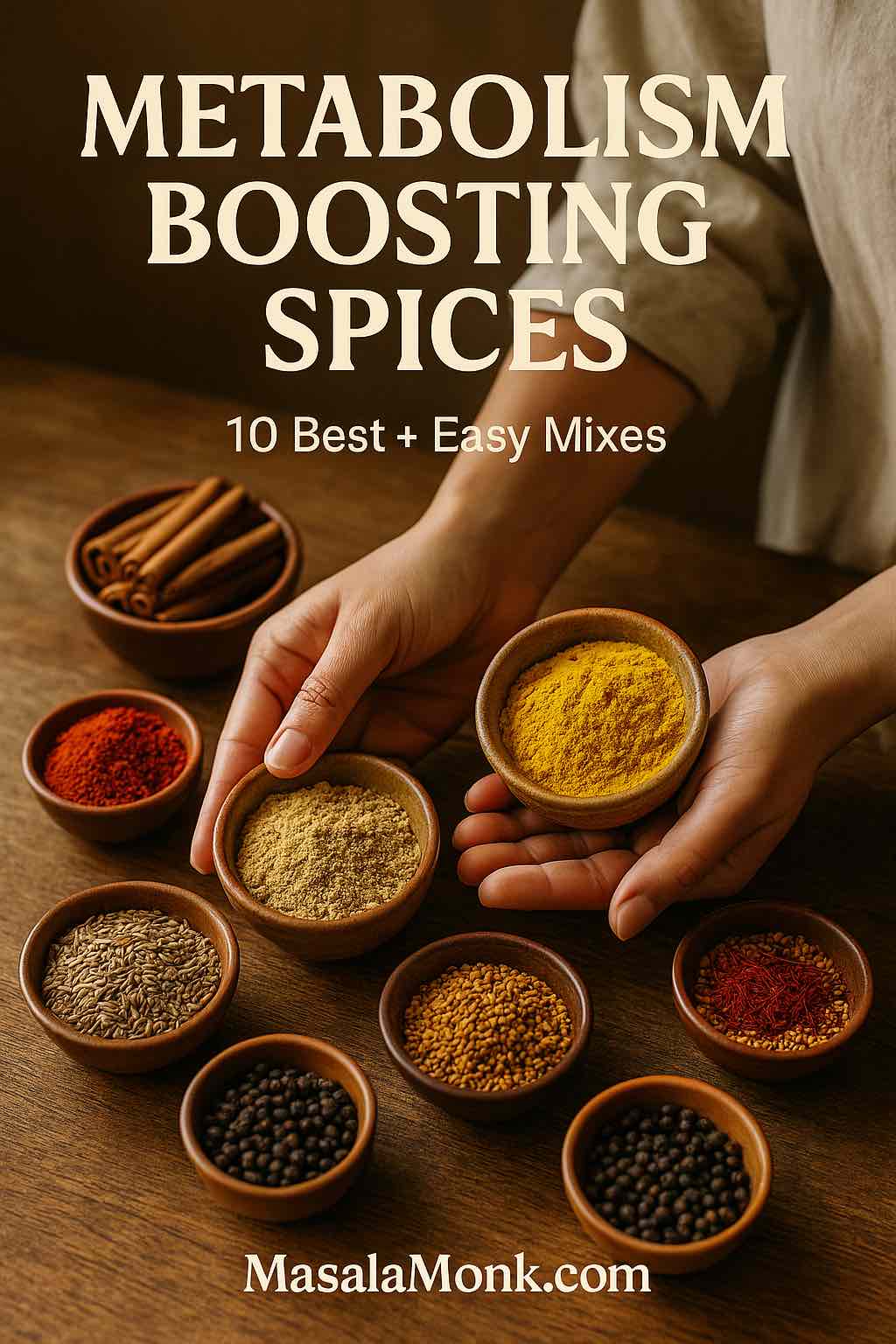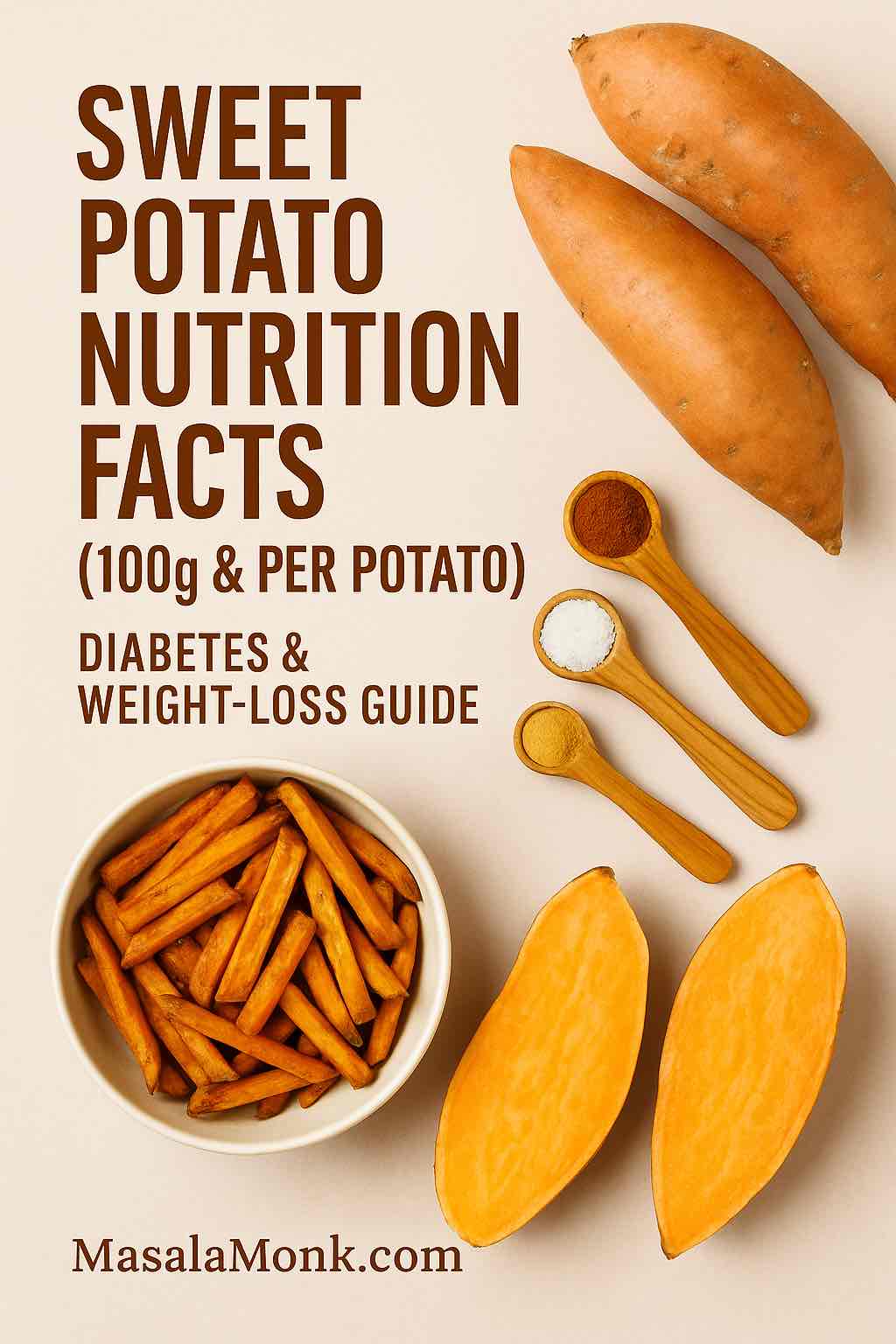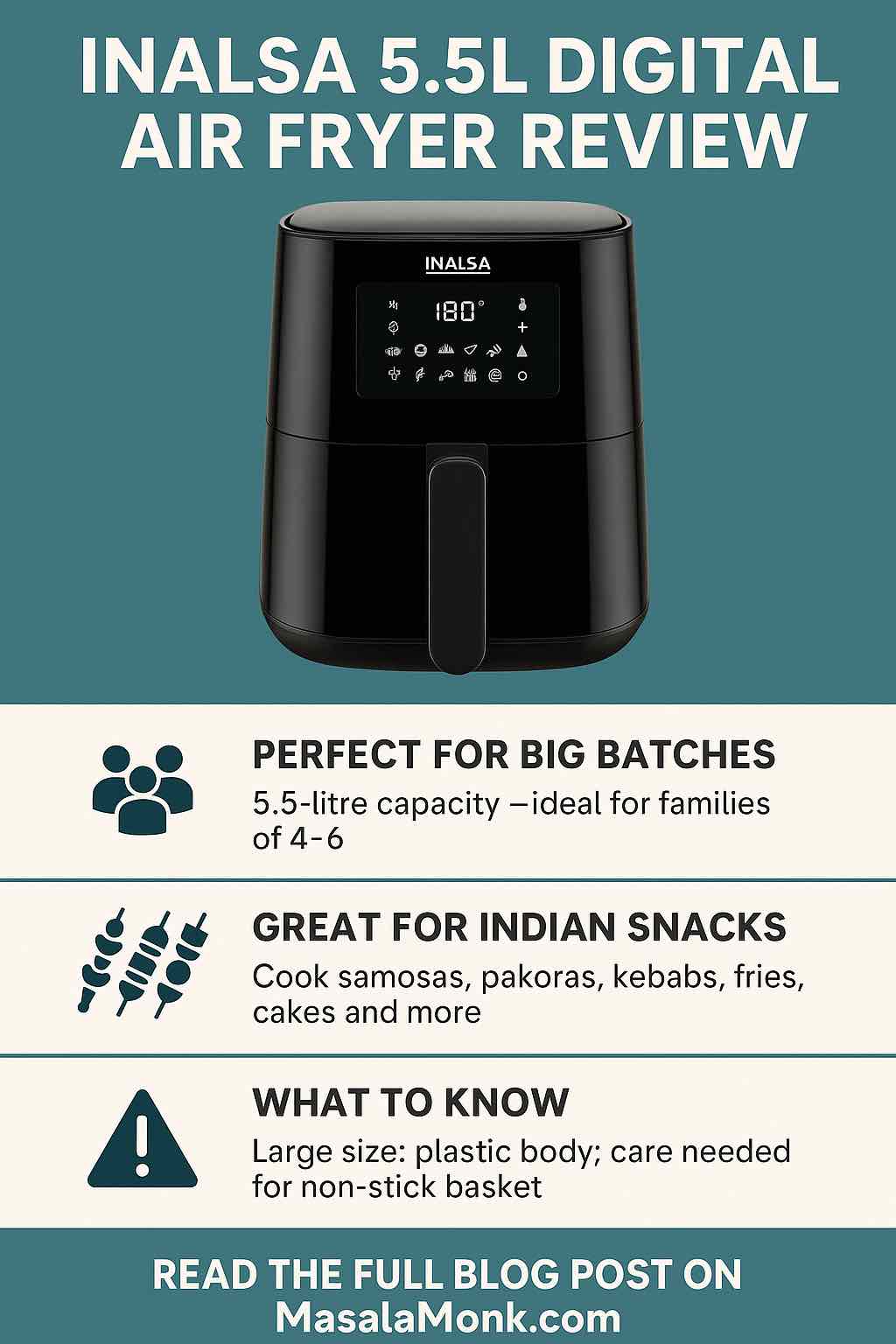
Choosing between ceramic vs Teflon (PTFE) cookware shouldn’t feel like a chemistry exam, yet it often does. From the first search—ceramic vs nonstick, is ceramic better than non stick, which is better: non stick or ceramic?—you meet a maze of claims, temperature myths, and durability debates. Let’s clear the air immediately: at everyday heat, PTFE delivers the slickest glide and usually lasts longer; meanwhile, ceramic-coated (sol-gel) provides a PFAS/PTFE-free surface that many cooks prefer, even if it needs replacing sooner. Either way, respect the basic rules: avoid empty preheats and keep the pan at or below 260 °C / 500 °F (see the Teflon™ safety guidance from Chemours for practical limits and care advice: safety page).
Plain-English Glossary: what we mean by “ceramic,” “PTFE,” and “PFAS”
Before we get deeper into this blog post, it’s important to clarify and explain a few terms which are often used in the industry.
Also Read: How to Choose The Best Cookware For Your Kitchen
PTFE (often marketed as Teflon™)
- What it is: A fluoropolymer that creates the classic low-friction non-stick surface many people call “Teflon.” (“Teflon™” is a brand; the material is PTFE.)
- What it feels like in use: Very slick, needs little oil, and—at sensible heat—keeps releasing food for a long time.
- Care basics: Keep it ≤ 260 °C / 500 °F, don’t preheat empty, use soft tools, hand-wash. See the brand’s safety guidance on everyday use via the Teflon™ safety page (Chemours).
- What it is not: PFOA (an older processing aid, now phased out by major U.S. producers under the EPA program). PTFE is the coating; PFOA was a past aid, not the cooking surface.
PFAS (the big chemical family)
- What it is: An umbrella group of fluorinated chemicals with many members; PTFE is one of them. The term covers a wide range of substances, not just cookware coatings.
- Why you see it on labels: Policy and consumer interest have pushed brands to declare whether a product’s coating contains any fluorinated chemistry.
- Where to learn more: The ECHA PFAS hub gives a practical overview of the family and the EU’s restriction process.
PTFE-free non-stick (what many “ceramic” pans mean)
- What it is: A non-stick coating that does not use PTFE. Most modern examples are ceramic-coated surfaces made with a silica-based sol-gel.
- What it feels like in use: Glass-smooth when new; over time, it usually needs a little more oil as the film wears.
- Why choose it: You want non-stick without a fluoropolymer coating.
- What to check: Packaging should state “PTFE-free” or “no fluoropolymer coating.” If it only says “PFOA-free,” that doesn’t automatically mean it’s PTFE-free.
Ceramic-coated / sol-gel (not pottery)
- What it is: A thin, glass-like film baked onto a metal pan (aluminum or steel). Think of it as a hard, slick clearcoat—not a clay pot.
- How it cooks: Responsive and smooth at first; with repeated high heat or abrasive scrubbing, the surface can become less slippery sooner than PTFE.
- Care basics: Moderate heat, soft tools, gentle cleaning. Treat it like a finish, not armor.
- What it is not: Traditional ceramic cookware (stoneware, porcelain). Those are thick ceramic bodies; “ceramic-coated” skillets are metal with a thin coating.
Why this glossary matters:
- When a label says “PFAS-free,” it claims no fluorinated chemicals in the coating.
- When it says “PTFE-free,” it means no fluoropolymer coating—but other PFAS may or may not be present unless the brand states PFAS-free explicitly.
- When it says “PFOA-free,” that tells you a past processing aid isn’t used, but it doesn’t tell you whether the pan’s coating is PTFE or ceramic. Read the spec sheet so you’re comparing like-for-like.
Ceramic vs Teflon: the quick picture you can cook with
Non stick should make food move on your terms. Ceramic pans vs nonstick (PTFE) cookware feel similar when new; both are smooth and forgiving. However, after months of breakfasts and hurried cleanups, differences show. Ceramic’s silica-based sol-gel film can lose slickness faster with repeated heat and abrasion. Conversely, PTFE’s ultra-low surface energy keeps eggs, dosas, and crêpes gliding with less oil—so long as you keep the heat sensible. Thus, for everyday breakfast duty and delicate fish, ceramic vs Teflon typically tilts toward PTFE for longevity.
Still, the difference between ceramic and non stick isn’t only performance. It’s also chemistry and comfort level. If you want to avoid PFAS entirely, ceramic makes that easier. If you care most about a low-friction glide that stays stable, PTFE is the pragmatic choice.
Also Read: Perfect Dosa Idly Batter: Your Guide to Fluffy Idlis and Crispy Dosas
What these coatings really are (and why that matters)
Ceramic vs nonstick: the materials story
Ceramic non stick isn’t pottery. It’s a thin sol-gel coating—think a glass-like network—applied over metal. Because it cures into a hard film, it feels crisp and clean out of the box. Even so, the film ages: repeated heating and scouring raise surface roughness, and the pan demands a touch more oil. That’s why you often hear ceramic frying pan vs non stick stories that begin with “amazing at first” and end with “fine, but less slippery.”
PTFE vs ceramic: the low-friction advantage
PTFE is a fluoropolymer known for exceptionally low surface energy. Consequently, food releases with minimal force and keeps doing so across many cycles. Respect its ceiling—260 °C / 500 °F—and never preheat empty. Follow those habits and a PTFE skillet usually retains slickness longer than a comparable ceramic pan. For brand-side clarity on limits and myths, see Teflon™ Myths & FAQ (here).
Also Read: The Copper Cookware Journey
Safety made plain: heat, PFOA, and what changed recently
Heat sanity check: Keep any non-stick at or below 260 °C / 500 °F. Don’t preheat empty. Use ventilation. Those three habits keep you well below temperatures where PTFE begins to fume and where any coating—PTFE or ceramic—ages fast.
Ceramic vs Teflon safety: first principles
Two points simplify the anxiety. First, PTFE ≠ PFOA. PTFE is the non stick coating; PFOA was a legacy processing aid. In the United States, major producers phased out PFOA under the EPA’s 2010/2015 PFOA Stewardship Program; the agency’s summary sits here: EPA fact sheet. Hence, modern branded PTFE cookware is generally made without PFOA.
Second, classification headlines need context. In December 2023, the International Agency for Research on Cancer (IARC) evaluated PFOA as carcinogenic to humans (Group 1) and PFOS as possibly carcinogenic (Group 2B). The 2025 Volume 135 page expands details (see IARC’s news note and Volume 135). That assessment addresses PFOA/PFOS exposure, not typical use of today’s PFOA-free PTFE pans.
Also Read: Buying a Cast Iron Skillet? 5 Warnings Before You Invest
Heat control: where ceramic vs non stick actually converges
In practice, both coatings demand moderate burners. Clinical and manufacturer sources align: PTFE can begin to fume near 260 °C / 500 °F; polymer-fume fever in people typically appears around 350 °C / 662 °F, and pyrolysis accelerates above ~400 °C / 752 °F. Therefore, cook low-to-medium, use your hood, and avoid empty preheats. A concise clinical summary lives on StatPearls / NCBI Bookshelf: polymer fume fever. Ceramic coatings, while PFAS-free, also suffer with sustained high heat; their film roughens and release declines. In short, ceramic vs non stick is less about “which survives abuse” than “which you treat kindly.”
Ceramic pans vs nonstick in real kitchens: how performance ages
Ceramic non stick vs non stick (PTFE): month-two and beyond
The first weeks often feel close. A ceramic pan vs non stick PTFE skillet both flip omelettes and glide pancakes. Gradually, though, ceramic’s sol-gel surface needs more fat to prevent micro-sticking. Meanwhile, PTFE keeps its advantage—provided you stick to the basics: ≤ 260 °C / 500 °F, soft tools, and hand-washing. That’s why ceramic nonstick vs regular nonstick discussions usually land on a simple conclusion: ceramic for PFAS-free, PTFE for long-term glide.
Ceramic coated pans vs Teflon: searing, saucing, and fond
What about dinner? Searing steaks or using a broiler is rough on any non stick. Here, ceramic cookware vs Teflon vs stainless steel becomes an easy triangle: stainless (or carbon steel) for the high-heat sear and fond, then PTFE (or ceramic) for sticky sauces and delicate finishes. Rather than forcing one pan to do everything, assign roles and watch the coatings last longer.
Substrate matchups: ceramic non stick vs stainless steel, aluminum, and more
Ceramic non stick pans vs stainless steel
Uncoated stainless excels at browning, Maillard depth, and pan sauces. It does not promise effortless release. Consequently, ceramic vs non stick cookware is really a choice between coated convenience and uncoated versatility. Many cooks keep both: a stainless sauté for fond and a PTFE skillet for eggs.
Ceramic non stick vs aluminum non stick (and vs stainless steel)
Bare aluminum spreads heat evenly but typically receives a coating to become non stick. Therefore, ceramic non stick vs aluminum non stick usually reduces to coating type (sol-gel vs PTFE) and quality. If you want a PFAS-free message, pick ceramic; if you want longevity, PTFE still tends to prevail—again, at sensible heat.
Also Read: Classic vs. Authentic Alfredo: 5 Essential Recipes
Air fryers, griddles, and specialty appliances
Ceramic vs Teflon air fryer: respect the hotspots
Air fryers introduce another variable: proximity to heating elements. Local hotspots can exceed your setting near the coil. Consequently, ceramic vs Teflon air fryer comparisons need caution. Choose PTFE for the slickest cleanup if you run conservative temps; choose ceramic for PFAS-free peace of mind. In both cases, stick to the appliance rating, avoid metal tools, and clean with non-abrasive pads.
Ceramic griddle vs nonstick griddle; ceramic vs non stick skillet
Flatbreads, pancakes, and sandwiches highlight small technique differences. A nonstick griddle with PTFE often keeps a wider comfort zone over months of use. A ceramic griddle works well early and still performs later with a bit more oil. Likewise, a ceramic vs non stick skillet shows the same arc: similar at first, diverging slowly as cycles accumulate.
Also Read: 12 Common Air Fryer Mistakes You Could Be Making
Marketing language, decoded without the hype
Ceramic coated cookware vs Teflon; ceramic vs Teflon vs granite; titanium and friends
Labels sound fancy. “Granite,” “diamond,” and “titanium” often refer to reinforcements or brand families—not necessarily different base chemistries. Hence, ceramic coated vs non stick is a structural question: Is this sol-gel ceramic or PTFE? Read the tech sheet, not just the box.
GreenPan vs Teflon; Greblon coating vs Teflon; George Foreman ceramic vs Teflon
Brand lines evolve across years and models. Some Greblon lines are PTFE; others are ceramic. Some “eco-ceramic” lines are sol-gel. Even George Foreman grills have used different finishes. Therefore, confirm the current coating on the exact model you plan to buy.
Ceramic coated vs ceramic cookware; ceramic vs ceramic coated cookware; ceramic vs non ceramic
Strictly speaking, “ceramic cookware” might mean pottery or stoneware. Most “ceramic non stick” skillets are metal pans with a ceramic-like sol-gel film. Meanwhile, ceramic vs non ceramic usually means “coated vs uncoated.” As a result, define your terms first, then compare like-for-like.
Heat habits that actually extend lifespan (for both coatings)
Because routine beats marketing, build a short ritual that protects either surface:
- Preheat briefly on low–medium, not full blast. Give the pan 10–20 seconds, then add fat and food.
- Respect the ceiling—≤ 260 °C / 500 °F. The figure appears in manufacturer guidance and plain-language explainers; see Teflon™ safety for the brand view (safety page).
- Cool before cleaning. Thermal shock fatigues both coating and base.
- Use soft tools. Wood, silicone, or nylon on the cooktop; non-abrasive pads in the sink.
- Retire damaged pans. Deep scratches, flaking, or rough patches signal the end of the line.
With those habits, ceramic vs Teflon becomes a calm, predictable choice rather than a noisy argument.
Also Read: 10 Examples of Egg Dishes, with 2 Eggs
Regulations in 2025: why labels keep shifting
Policy never flips your omelette, yet it shapes packaging and claims. In the European Union, a broad PFAS restriction continues to advance. The European Chemicals Agency (ECHA) announced a timeline in August 2025 and aims to complete the scientific evaluation by end-2026; track updates via the timeline announcement and the PFAS hot-topics hub.
In the United States, the federal anchor is the earlier PFOA phase-out, but states diverge. In October 2025, California’s governor vetoed a bill that would have broadly banned PFAS in cookware and several other product categories, citing concerns over affordability and scope. For coverage and reactions, see The Guardian’s reporting (story 1, story 2). Expect more “PFAS-free” claims, stricter documentation requests from retailers, and a steady shift in brand language.
Buying quickly, but wisely (without turning it into a spreadsheet)
Here’s a simple, narrative way to decide—no checkboxes, just honest alignment with how you cook:
- If your day starts with eggs or crêpes, and you want results with little oil, PTFE is the path of least resistance. Months later, it still glides—assuming you respect heat.
- If you value PFAS/PTFE-free cookware above all, ceramic fits your priorities. You’ll likely add a little more fat after a while and replace the pan sooner; nonetheless, you’ll feel good about the chemistry profile.
- If you sear hard or broil often, neither coating is ideal for that step. Use uncoated cast iron or carbon steel for the high-heat moment, then move to PTFE vs ceramic for sticky sauces and gentle finishes.
- If you love one-pan dinners, PTFE gives you the widest margin for error at moderate heat. Ceramic can do it too; it simply rewards a gentler burner and softer cleaning.
- If you batch-cook on a griddle, a nonstick (PTFE) griddle tends to keep a forgiving surface across months of use. A ceramic griddle works well early and remains useful later with slightly more oil.
In short, the answer to is ceramic cookware better than nonstick or is ceramic better than Teflon becomes personal: do you prize chemistry or longevity?
Also Read: Top 10 Iron Rich Vegetables to Help Cure Anemia & Boost Hemoglobin
Final word: put your pan where it performs
After all the research, ceramic vs Teflon (PTFE) cookware comes down to how you cook, not just what the box promises. For the slickest glide and the longest non stick life at everyday heat, PTFE remains the practical winner. For a PFAS/PTFE-free option that shines on low–medium burners, ceramic delivers—just expect a shorter slickness window. Either way, technique beats hype. Preheat with patience. Ventilate. Use soft tools. Hand-wash. Retire tired pans. With that rhythm, ceramic vs non stick stops being a debate and becomes a calm, confident choice that fits your kitchen.
FAQs
1) Is ceramic cookware better than nonstick?
In short, it depends on what you value. Ceramic (sol-gel) is PTFE-free and feels glass-smooth when new; however, it usually loses slickness sooner. Traditional nonstick (PTFE) stays slippery longer at everyday heat; conversely, it isn’t ideal for very high-heat searing. Choose chemistry preference (ceramic) or longevity/slickness (PTFE).
2) Which is better: non stick or ceramic?
Generally, for eggs, crêpes, and delicate fish, PTFE wins on effortless release and lifespan. Ceramic still works beautifully at low–medium heat; nonetheless, expect to use a touch more oil as months pass.
3) Ceramic vs Teflon (PTFE) Cookware: what’s the real difference?
Ceramic uses a silica-based sol-gel film baked onto metal; Teflon (PTFE) is a fluoropolymer coating. Moreover, ceramic is PTFE-free; PTFE is the classic ultra-low-friction surface that tends to last longer when used within temperature limits.
4) Ceramic pans vs nonstick: which lasts longer?
Typically, PTFE lasts longer in day-to-day kitchens. Ceramic can still serve well; even so, repeated high heat and abrasive cleaning shorten its slickness window faster.
5) PTFE vs ceramic: which is safer?
Both are considered safe at normal cooking temperatures when used correctly. Therefore, keep heat moderate, avoid empty preheats, ventilate, and retire damaged pans. Safety hinges more on how you cook than on the logo.
6) Ceramic coated pans vs Teflon: do I need different care?
Yes—though there’s overlap. Use soft tools, hand-wash, and avoid harsh scourers. Additionally, keep either type at sensible heat; ceramic, especially, benefits from gentle burners and non-abrasive cleaning.
7) Are ceramic frying pans better than Teflon for breakfast?
Often not over time. PTFE’s lower sticking threshold helps omelettes glide with less oil month after month; ceramic works early on, yet gradually needs more fat. Consequently, many breakfast-heavy cooks prefer PTFE.
8) Ceramic cookware vs non stick: which handles searing?
Neither coating loves intense searing or broilers. Instead, use uncoated cast iron or carbon steel for high-heat tasks; then, return to ceramic or PTFE for sticky sauces and gentle finishes.
9) Does ceramic cookware have Teflon?
No—“ceramic-coated” typically means PTFE-free. Importantly, confirm you’re buying a ceramic (sol-gel) coating rather than a ceramic-sounding marketing name over PTFE.
10) Ceramic cookware vs Teflon vs stainless steel: when should I use each?
Think in roles. Stainless excels at browning and fond; PTFE rules easy release; ceramic offers a PTFE-free option for moderate heat. Ultimately, a mixed toolkit covers every job.
11) Ceramic frying pan vs non stick pan: which is more heat tolerant?
Marketing can imply high tolerance; however, real-world guidance for both is similar: moderate burners, no empty preheats, and avoid direct flames licking the sides. Exceeding limits ages any coating quickly.
12) Ceramic non stick vs aluminum non stick vs stainless steel—what’s the difference?
Aluminum is a great heat conductor but needs a coating (ceramic or PTFE) for release. Stainless is uncoated and excels at searing; similarly, it demands technique to prevent sticking. Consequently, pick based on recipe and cleanup needs.
13) Ceramic or non stick: which is better for low-oil cooking?
For sustained low-oil cooking, PTFE usually maintains glide with less fat. Ceramic can deliver low-oil results when new; nonetheless, a little extra oil may be needed as the coating ages.
14) Ceramic vs Teflon (PTFE) cookware: which coating is more durable with daily use?
PTFE generally resists sticking for longer under repeated cooking and gentle cleaning. Ceramic durability improves if you keep heat modest, avoid stacking scratches, and wash softly.
15) Ceramic nonstick vs regular nonstick: is there a taste or odor difference?
Usually no. However, overheating any coating can produce off-odors and faster wear. Therefore, stay within recommended temperatures for clean flavors and longer life.
16) Ceramic vs non stick skillet: what size and base should I buy?
Choose a flat, thick base for even heat—28–30 cm suits most homes. Additionally, ensure the base matches your cooktop (including induction if needed). A snug lid helps with gentle finishes on either coating.
17) Ceramic vs Teflon air fryer baskets: which cleans easier?
PTFE baskets often wipe clean with less effort, especially after months of use. Ceramic baskets clean well when new; even so, avoid abrasives and keep temps within the appliance rating to preserve slickness.
18) Ceramic coated cookware vs Teflon: will acidic foods damage them?
At moderate heat, tomato sauces and citrus are fine on both. Conversely, prolonged high heat is tougher on any coating—keep flames reasonable and stir often.
19) Is ceramic coating better than Teflon for health?
If your priority is avoiding fluoropolymer coatings altogether, ceramic aligns with that preference. Otherwise, at everyday temperatures and with good ventilation, both are considered safe when used as directed.
20) Ceramic vs non stick griddle: which is best for pancakes and dosa?
Over months, a PTFE griddle usually keeps a wider margin for error and needs less oil. Ceramic still works; nonetheless, expect to refresh with a light oil film as the surface ages.
21) Ceramic vs Teflon vs “granite” or “titanium”: are those different chemistries?
Often those words are brand lines or reinforcements, not a new base chemistry. Consequently, verify whether the pan uses PTFE or ceramic underneath the marketing term.
22) Ceramic coated vs ceramic cookware: are they the same?
No. “Ceramic-coated” skillets are metal pans with a thin glass-like film. “Ceramic cookware” can also mean pottery/stoneware. Different materials, different behavior.
23) Is ceramic non stick better than Teflon for beginners?
Beginners often find PTFE more forgiving because it releases with less oil and tolerates small timing errors. Even so, ceramic suits beginners who keep heat modest and clean gently.
24) Which lasts longer: ceramic non stick pan vs Teflon (PTFE) cookware pan?
All else equal, PTFE pans tend to outlast ceramic in non-stick performance at everyday heat. Therefore, if longevity is your top priority, PTFE is the safer bet.
25) Ceramic vs non stick cookware: what’s the smartest combo for a small kitchen?
Go with a PTFE skillet for breakfast and quick, sticky dishes; add one uncoated pan (stainless or cast iron) for searing and oven work. Meanwhile, if you want a PTFE-free option, keep a ceramic skillet for low–medium tasks. This trio covers nearly everything without clutter.
Further reading (already linked inline)
- Chemours / Teflon™: safety and usage caps (260 °C / 500 °F) — Safety • Myths & FAQ
- EPA: 2010/2015 PFOA Stewardship Program — Fact sheet
- IARC: PFOA/PFOS classifications (2023 news; 2025 monograph page) — News note • Volume 135
- StatPearls / NCBI: polymer fume fever and temperature thresholds — Clinical overview
- ECHA: PFAS restriction timeline and hub — Timeline • Hot topics
- California 2025 PFAS cookware bill veto — The Guardian reporting 1 • reporting 2













